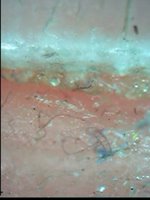
The postulated molecular mechanism for the action of near-infrared lasers on wound healing and seed viability is photoactivation of enzymes: Primary photoacceptors, which are activated by laser, are thought to be flavins, cytochromes (pigments in the respiratory chain of cells) and porphyrins. These mitochondrial enzymes can convert laser energy into electro-chemical energy. The relevance of this to intra-protein electron transfer reactions?
During my summer internship with Dr. Hoopes' lab I decided to assay the absorbance spectra of proteins in order to discover which protein(s) were absorbing the near-infrared laser light. I assumed, as this review apparently does, that the coherent properties of the laser were or secondary importance, related only to the intensity of light delivered. I am still looking for a good reference work that charts protein absorbance spectra for a truly systematic analysis of the problem. Unfortunately, it appears likely that the color of proteins is determined by a number of factors, most notably the entire state of the cytoplasmic matrix.
I am also not sure what the relevance, if any, of autofluorescence or autolasing is to this.
On the clinical side, with the advent of cheap multi-spectra LEDs the range of this NASA-discovered therapy can only increase.
DETAILS: It is postulated that the following reaction is activated by laser (1): Low doses of laser stimulate ATP activation of the Ca++ pump in mitochondria. Ca++ enters the cytoplasm (via ion channels) and eventually(?) activates cell mitosis and cell proliferation. Higher doses of laser stimulate hyperactivity of the Ca++/ATPase pump and exhaust the ATP reserves of the cell, leading to inability to maintain osmotic pressure and apoptosis.
No comments:
Post a Comment